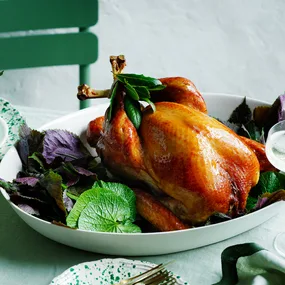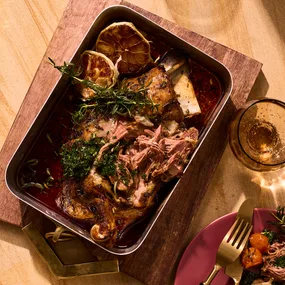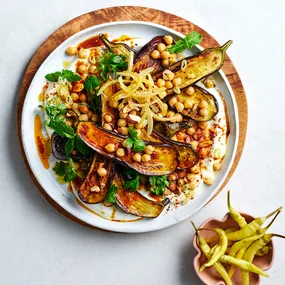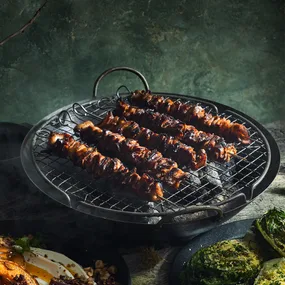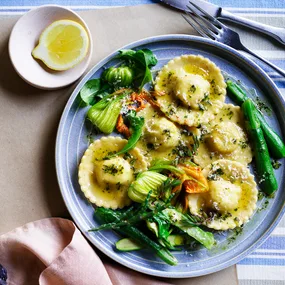This happy marriage of rice noodles and spiced broth is perfect for summer, writes Tony Tan.
If there is one Malaysian dish that beats rendang and curry laksa, it is asam laksa. A rice noodle soup flavoured with a heady fish broth made from tamarind, galangal, lemongrass, turmeric and ground chillies, topped with flaked fish, tropical herbs, tangy pineapple and crunchy cucumber, asam laksa has won the hearts and palates of Malaysians and visitors alike.
I suspect it is not as well known here in Australia.
Asam (also spelt assam) is the Malay word for tamarind, which is the main souring agent in the soup. Dried pieces of asam gelugor, a tropical Malaysian fruit also known as asam keping in Malay (and confusingly called tamarind skin in English), are also often added to enhance the tangy flavour. These key ingredients complement the strong-tasting fish: wolf herring and chub mackerel are favoured for the soup in Malaysia.
Another key ingredient is torch ginger flower (known to Japanese cooks as myoga), which is sold frozen in many Asian grocers, although I’ve seen it growing in the Northern Territory and Queensland. I’ve successfully served the dish, however, even to Malaysian friends, without it.
For asam laksa to be really authentic, hae ko (as it is known in Hokkien, or petis udang in Bahasa Malaysia) is added to the recipe. Made from shrimp, this pungent, molasses-like shrimp sauce, diluted with a little warm water, lends extra kick.
According to Alice Yong, one of Malaysia’s top food writers, asam laksa should be served with laksa noodles – thick and springy noodles made from rice, sago and tapioca flours. But I think thin rice noodles are also acceptable. Yong also says there are several versions of asam laksa in Malaysia; most notable are those from the states of Kedah, Perlis and Perak, but the Penang version is by far the most popular. Sometimes also called Nonya asam laksa, Penang laksa is not particularly difficult to make but requires some perseverance.
The secret to making a great asam laksa is super-fresh fish; it needs to be gutted, scaled and cleaned, although I reserve the heads for added flavour. Put your chosen fish – my favourites are snapper, blue-eye trevalla, bream and flathead – into a stockpot of cold water along with large sprigs of Vietnamese mint and sliced galangal, and simmer until the fish is cooked through. Once it’s done, remove the fish from the stock with a slotted spoon and set it aside to cool before flaking the flesh into large pieces, then strain the stock into a clean saucepan.
While the fish is simmering, pound the spice paste ingredients in a mortar and pestle or pulse them in a blender to a fine paste. Purists may insist on the mortar and pestle method, but I find that a blender or food processor makes light work of what can be a time-consuming task. If you go with the mortar and pestle, use a large, heavy-duty one and make the paste in batches. This is then added to the strained fish stock along with the tamarind liquid, with sugar and salt to taste. Simmer this mixture gently for about 30 minutes, letting the sweet, sour and spicy flavours develop and blend into a harmonious broth. At this stage, you may like to return some of the flaked fish to the broth for added complexity.
By now, you should have soaked your choice of rice noodles – one of my favourites is Twenty-Twenty Penang brand laksa rice noodles, sold in many Asian supermarkets. This is also the time to prepare your garnish – pick bunches of Vietnamese mint and common mint, slice onion and chillies, chop chunks of pineapple, and shred cucumber and torch ginger flower.
Lastly, dunk your noodles into a saucepan of boiling water, then drain them and divide them among serving bowls. Scatter the flaked fish over the noodles, add the broth and top with a selection of garnishes.
Ingredients
Method
Main
Note Asam gelugor (a tropical fruit), torch ginger flowers, hae ko (shrimp sauce) and belacan are available from Asian grocers.
Notes


